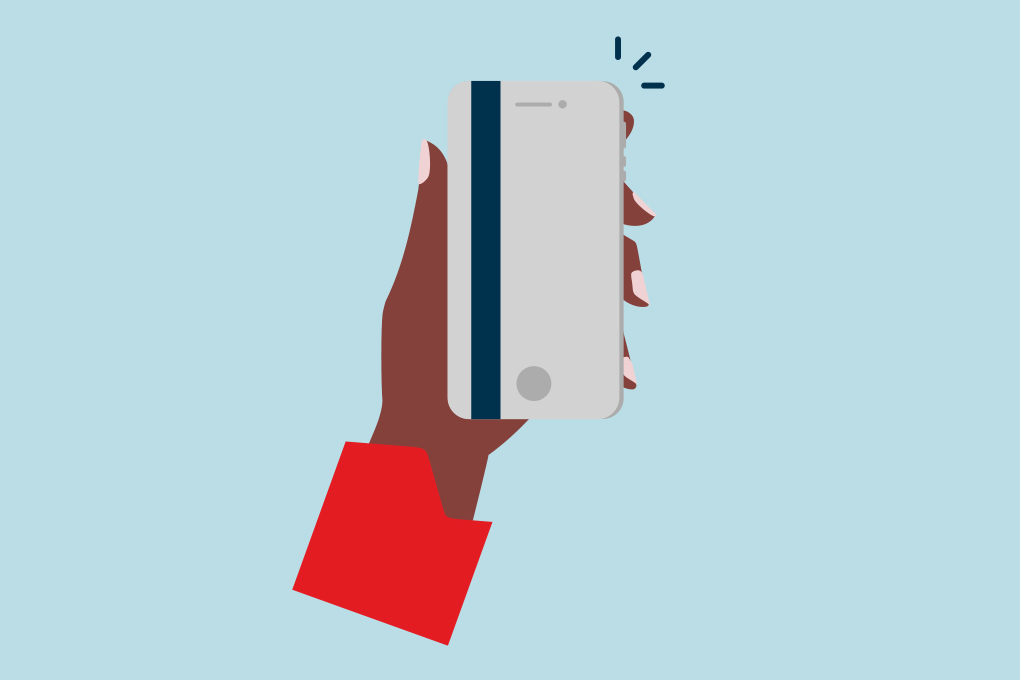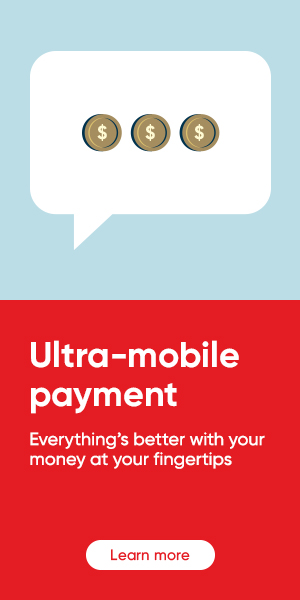Download the mobile app
To start paying with your phone, first you have to download your bank’s mobile app as well as a mobile payment app, such as Apple Pay<sup>TM</sup> or Google PayTM. Then, all you have to do is add your debit or credit card to the app. It only takes a few minutes to follow the instructions on your screen.
When paying at the cash, check if there’s a mobile payment logo on the terminal. If there is, then just unlock your phone and hold it up to the terminal to make your purchase. Your debit or credit card will be used.
Note: On some phones, the NFC (Near-Field Communication) function must be enabled to allow mobile payments.
Paying at the cash becomes much more efficient
With mobile payment, stopping at a café on your way to work will take up less of your time. Instead of digging for your wallet and looking for your card, all you need is your phone – which you’re probably already holding in your hand – to pay in a fraction of a second.
It’s also a good payment option for busy mornings when you’re rushing out and forget your wallet on the kitchen counter. You should still keep your wallet on you though, in case your battery runs out!
Mobile payments also make purchasing items online much faster since all your details are already in the app. No need to fill out long forms anymore to complete your transaction. Same as when you pay in a store, all you have to do is look for the Apple PayTM or Google PayTM logo when you check out.
And since you have a mobile payment app and your bank’s app on the same device, you can complete a transaction and take a look at your finances in just a few taps. It’s convenient to be able to see if you can really afford a third pair of sneakers for festival season before confirming your order.
Keep your information safe (really!)
Paying with your phone is as safe as paying by card or with cash. Take it from Georges Gay, Director, Payments, at National Bank.
“When you use mobile payment, the phone doesn’t really store your bank card numbers,” he explains. “The card is represented with a token on your phone. These tokens can only be used for one thing, and they’re encrypted.”
So even if someone gained access to your phone or the data on it, they wouldn’t have access to your banking information. “Even if they had access to this token, they wouldn’t be able to do anything with it. These tokens are issued by Interac or by credit card companies, and they’re the only ones who can decode them,” says Georges Gay.
The second level is the protection native to the phone itself. For example, with AppleTM, you have to use your digital fingerprint on the Home icon or use Face ID to authorize a mobile transaction. For other companies, you have to enter a code on the screen for the mobile payment to go through.
Despite these measures, if someone manages to get their hands on your phone and make purchases on it, all transactions paid for via mobile payments are protected by the Peace of Mind Guarantee. In the unlikely event that you become a victim of fraud, 100% of the money you lose will be reimbursed to you if you followed the recommended security measures.
Now that you have the right tools and are ready to pay with your phone, keep a look out for the mobile payment logo (Apple PayTM or Google PayTM) in your favourite cafés, shops, restaurants and bars.

